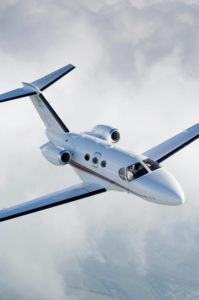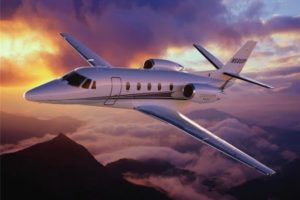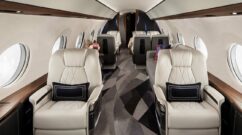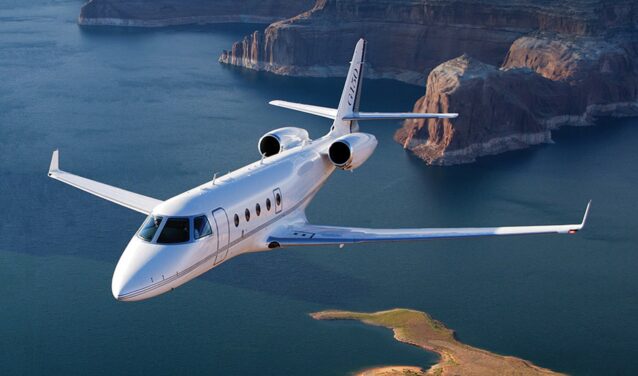Have you decided on a model of private jet for sale and would like to buy it? Do you want to buy a private jet but don’t know which one to choose? Are you curious about the formalities that airlines go through to prepare their sales contracts?
Then you’ve come to the right place. We’re here to give you all the answers and details you need to know about buying a private jet.
Which aircraft to buy?
The business aviation market is full of possibilities. In fact, there are a multitude of aircraft to meet a variety of needs: leisure flights, long-distance flights, business flights… If you decide to buy a private jet, you’ll be spoilt for choice in terms of size, design, performance, technological equipment... So it’s essential to identify your needs in advance to make the right choice. That’s why we’ve selected the best aircraft on the market for your specific needs:
Buying an aircraft for leisure?
If you’re looking to buy a private jet for leisure, here are the main models you should consider:
The Pilatus PC-12, made in Switzerland, is a single-engine aircraft with an integrated propeller. Both safe and versatile, it provides the same safety standards as other turboprops in its class. The Pilatus PC-12 can land at over 2,500 airfields in Europe, where a private jet or commercial aircraft could not. It has the advantage of easy access to the short runways of Gstaad – Saanen, Lausanne, Arcachon Cap Ferret, Ile d’Yeu or Saint-Tropez la Môle.
Specifications:
. cruising speed: 464 km/h
. Maximum distance: 2090 km
. Cabin size: 5.16 m long – 1.47 m high – 1.52 m wide
. Category: Turboprop – 2 pilots with 6 passengers
Cost new: from 3.36 million euros

- Embraer Phenom 100
The Phenom 100 is a very light business jet produced by Brazilian manufacturer Embraer. Its refined, elegant interior has been designed down to the last detail by BMW. It features ample space for luggage and slots for coats and computers.
Specifications:
. 720 km/h cruising speed
. Maximum range: 2200 km
. Cabin size: 3 m long – 1.37 m high – 1.40 m wide
. Category: Very Light Jet (LVJ) – 2 pilots with 4/5 passengers
Cost new: from 3.581 million euros

Buying a plane for business?
For business flights, discover the aircraft with cabins offering the best working conditions:
With its 4 comfortable VIP seats, the Citation Mustang is an excellent working tool. This ultra-light private jet is suitable for customers looking for a practical and highly economical solution for their short-haul air travel.
Key features:
. 630 km/h cruising speed
. Maximum distance: 2160 km
. Cabin size: 3 m long – 1.37 m high – 1.40 m wide
. Category: Very Light Jet (LVJ) – 2 pilots with 4 passengers
Cost new: 2.94 million euros

The Citation XLS business jet is ideal for flights in Europe. Its intermediate size means it can still access short, difficult-to-reach airstrips such as those in the mountains or by the sea. It can accommodate up to ten passengers and has a very spacious cargo hold.
Specifications:
. cruising speed: 805 km/h
. Maximum range: 3600km
. Cabin size: 5.79 m long – 1.65 m high – 1.70 m wide
. Category: Intermediate private jet – 2 pilots with 10 passengers
Cost new: 13 million euros

Buying a plane for comfortable travel?
Just like the CEOs of the CAC 40 or the greatest footballers, you can turn to more luxurious models:
The Praetor 600 is a particularly technologically advanced super-midsize business jet. It boasts a substantial range, enabling it to fly close to 4 ,500 km non-stop and make London-New York trips with ease.
Key features:
. Cruising speed: 850 km/h
. Maximum range: 4,500 km
. Cabin size: 8.20 m long – 1.83 m high – 2.49 m wide
. Category: Intermediate private jet – 2 pilots with 12 passengers
Cost new: 30 million euros

- Dassault Falcon 6X
Combining technical capabilities and luxury design, the Falcon 6X will meet the expectations of the most demanding customers. It is ideal for medium- and long-haul flights, thanks to its PW812D engines from Pratt & Whitney Canada, defying all competition in terms of power. Last but not least, it features a warm, quiet cabin with modern styling that’s 100% customizable.
Features:
. Cruising speed: 980 km/h
. Maximum distance: 10,186 km
. Cabin size: 12.3 m long – 1.98 m high – 2.58 m wide
. Category: Long-haul private jet – 2 pilots with 16 passengers
Cost new: 38 million euros

- Bombardier Challenger 850
With its elegant design, the Challenger 850 is powered by GECF34-3B1 engines, giving it a maximum speed of 850 km/h. This long-haul jet is appreciated for the unrivalled comfort of its spacious cabin. It offers the 16 passengers who can climb aboard a variety of spaces: a galley area, several toilets..
Features:
. Cruise speed: 850 km/h
. Maximum distance: 5000 km
. Cabin size: 14.7 m long – 1.85 m high – 2.49 m wide
. Category: Long-haul jet – 2 pilots with 13/16 passengers
Cost new: 21 million euros

How do airlines prepare contracts?
The aircraft orders booked each year are the result of long and tumultuous negotiations. These involve airlines and private jet manufacturers, and can extend over several years. Indeed, these orders for aircraft worth millions of euros begin long before they are put on display at the Paris Air Show. As for the origin of these contracts, there are two options: either they come from a bid initiated by the aircraft manufacturers, or they are the result of invitations to tender issued by the carriers.
- Airline manufacturer-initiated bidding
In this case, the approach is initiated by the aircraft manufacturer itself. Knowing the needs and locations of airlines, aircraft manufacturers will be able to make regular proposals.
- Launching carrier invitations to tender
The second option is to send “Request For Proposal” to the manufacturers. In this case, the company defines a fleet plan in advance, to meet its needs in terms of quantity and type of aircraft over several years. For the largest orders, some companies even draw up fleet plans for the next 20 years. Several criteria are then taken into account: competitors’ fleets and projects, forecast traffic, profitability targets, oil price trends, investment budget… Also, if the aim is to complete the fleet with well-known aircraft or new models on the market, the approach will not be the same. For example, for a “classic” aircraft, a simple framework contract will suffice. On the other hand, more recent models will require a more in-depth technical, commercial and financial study.
What are the criteria for winning a contract?
Numerous criteria come into play, right from the start of the campaign. The evaluation of the aircraft’s performance is a central element, and includes: the quality of the engines and the number of engine manufacturers involved in equipping the aircraft. But that’s not all: other factors also have an influence, such as: maintenance costs, delivery slots, aircraft availability by package… Representing a high investment, most companies set up certain programs to reduce costs, and take out insurance. That’s why some contracts can easily run to almost 600 pages.
How are prices negotiated?
So how are negotiations carried out? While some airlines, such as Ryanair, will do everything in their power to keep costs down, the manufacturer is often the winner. An order placed with an aircraft manufacturer is automatically subject to a price escalation formula. Also known as the “escalation formula”, this method consists of indexing price variations according to various parameters: the price of labor, raw materials, oil, etc. In this way, a decreasing economy of scale is applied: the larger the fleet, the more expensive the order.
Another element on which airlines create a margin is associated services. The main purpose of these services is regulatory aircraft maintenance, at various levels: ramp maintenance, structural maintenance, engine maintenance, equipment maintenance and component maintenance. These overhauls are spread over time and classified into different categories. From category A for monthly maintenance to category D for maintenance to be carried out every 4/5 years, this element represents a real source of income to amortize the manufacturer’s discounts. This sector, initially dominated by engine manufacturers, is experiencing strong growth and has recently been extended to include OEMs. The MRO (Maintenance Repair & Overhaul) market is set to grow by 20% between now and 2025.
How high are the discounts? What is the final price paid by the company?
Discounts vary according to the size and composition of the order. Depending on the type of aircraft ordered, the purpose of the order and the importance of the customer, the discount can vary between 40% and 55%. For very large aircraft orders, such as A380s, this represents a considerable departure from the advertised catalog price of $400 million. Although airlines rarely pay this list price, it does serve as a benchmark. For example, it comes in handy when it comes to calculating down payments. The initial down-payments made by the carrier at the time of ordering are very low, and increase progressively. After a year and a half, this down-payment is generally around 25%, and it’s only at the delivery stage that the entire balance is paid.
Frequently asked questions about buying and using private aircraft
What are the advantages of buying a private aircraft rather than renting for each trip?
Buying a private aircraft offers unrivalled freedom: immediate availability, total customization of interior and equipment, and enhanced confidentiality.
Unlike leasing, you avoid booking constraints, time limits and recurring costs per flight. It’s also a tangible investment that can appreciate in value (for certain rare models) or be resold.
On the other hand, it involves fixed costs (maintenance, hangar, insurance) and active management. Leasing remains ideal for occasional use, or for testing different models before purchasing.
Is it possible to buy a used private jet? What are the risks?
Absolutely! The second-hand market is dynamic, and makes it possible to acquire a jet at a lower cost (up to 50% less than new). The main risks relate to technical condition (engine wear, corrosion) and maintenance history. To avoid them, insist on :
- A pre-purchase inspection (PPI) by an independent expert.
- Maintenance logs (follow-up of overhauls, possible accidents).
- A legal audit (ownership, aircraft-related debts).
Some models, such as the Cessna Citation or Gulfstream G650, enjoy excellent resale value thanks to their durability.
How can I finance the purchase of a private jet?
Several options are available:
- Operational leasing: You lease the aircraft for 5 to 10 years, with a purchase option at the end of the contract. Ideal for reducing cash flow.
- Bank loan: Specialized banks (such as BNP Paribas Jet Finance) offer 10-15 year loans, often secured by the aircraft itself.
- Fractional ownership: Buy part of the aircraft (1/8 to 1/2) through companies like NetJets, sharing the costs.
Cash: Reserved for the ultra-rich, but avoids interest.
What are the hidden costs after purchase?
In addition to the purchase price, you need to consider :
- Maintenance: 5 to 10% of the aircraft’s value annually (overhauls, parts).
- Storage: €10,000 to €50,000/year for a secure hangar.
- Insurance: 1 to 3% of the jet’s value per year.
- Crew: €150,000 to €300,000/year for pilot + co-pilot.
Fuel: Approximately €2,000/hour of flight for a midsize jet.
How do I choose between a turboprop and a jet?
It all depends on use:
Jets (e.g. Embraer Phenom 300): Speed, cruising altitude (less turbulence), pressurized cabin. Ideal for international journeys or sustained flight rates.
Turboprops (e.g. Pilatus PC-12): More economical (30% less expensive per hour), access to smaller runways, but lower speed and comfort. Ideal for regional routes.
What are the legal steps involved in registering a private aircraft?
Registration varies from country to country, but here are the key steps in Europe:
Tax declaration: VAT (20% in the EU), possibly recoverable if the aircraft is used for business.
Certificate of Airworthiness: Issued by EASA (European Aviation Safety Agency) after technical verification.
Compulsory insurance: Covering civil liability and property damage.
Registration: Via the national authority (e.g. DGAC in France). Choice between “private” or “commercial” registration.
Can I buy a private plane without being a pilot?
Yes, and it’s quite common! Most owners employ professional pilots. However, you will need to :
Obtain an operating license: If you offer paid flights (even for friends), commercial certification is required.
Hire a crew: either directly (permanent contract), or via a management company (which will also handle maintenance).
How long does it take to deliver a new aircraft?
12 to 36 months, depending on model and demand. Ultra-luxury jets (such as the Dassault Falcon 6X) sometimes have waiting lists of 3 years. Some manufacturers offer early delivery “slots”… for a price premium.
How can I reduce the environmental impact of a private jet?
There are several solutions:
Choice of model: New jets (Gulfstream G700, Bombardier Global 7500) consume 15 to 20% less fuel.
Carbon offsetting: Through programs such as those offered by ClimateSeed.
Sustainable fuels (SAF): Some airports (Geneva, Farnborough) offer these, but they cost 2 to 5 times more.
What to do in the event of a technical breakdown abroad?
Owners generally subscribe to worldwide assistance programs (e.g. Jet Support Solutions Inc.). These services include :
- 24/7 breakdown assistance.
- Loan of a replacement aircraft.
Hotel care for passengers.
Check that your contract covers the zones where you are traveling (Africa, Asia, etc.).
How does the resale of a private plane work?
The market is less liquid than that for cars. To maximize your return:
Target growth markets: Middle East, Asia for high-end jets.
Prepare the aircraft: Up-to-date overhaul, new fairing, renovated interior.
Use a broker: They have access to networks of international buyers (commission: 3 to 6% of the sale price).
Can a private plane be profitable?
Yes, but only under certain conditions:
- Rental to third parties: Via platforms such as Victor or Air Charter Service (beware of commercial usage rules).
- Cost-sharing: Authorized in the EU if each passenger pays his or her share (no profit).
Tax deductions: In some countries (e.g. USA), depreciation is deductible if the aircraft is used for business.
What are the most convenient airports to base your aircraft in Europe?
- Luxembourg (ELLX): advantageous tax regime.
- Geneva (LSGG): Discreet hub for jets.
- Le Bourget (LFPB): Close to Paris, premium infrastructure.
- Farnborough (EGLF): Specialized in business aviation.
How do airlines finance their orders?
The mega-orders for Airbus A350s and Boeing B787s from airlines like AirFrance KLM may seem impossible to finance. However, the major carriers have a number of strategic levers at their disposal, preventing them from filing for bankruptcy.
Firstly, the current down-payment system enables airlines to spread costs over time. The full price is paid at the time of delivery, not when the order is placed. This means the company pays very little in the short term, and benefits from a degree of flexibility. Another important element is the use of leasing by airlines. For an airline operator, this strategy involves leasing its aircraft to another company for an average period of 6 years. Air France finances a third of its fleet in this way.






